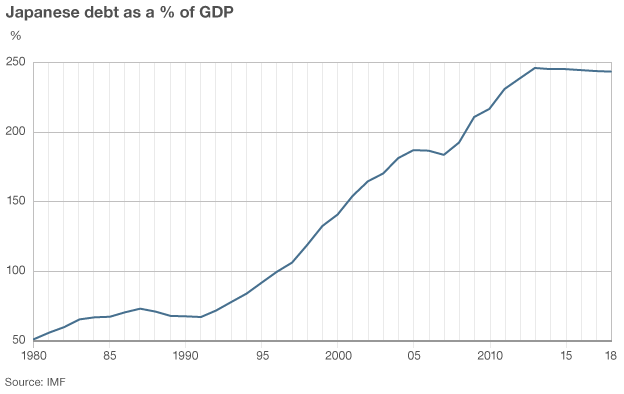I remember it well. That is, the fiscal rectitude of the old Japan.
During early 1981 as the Reagan White House prepared its radical fiscal plan—-what Senate Majority Leader Howard Baker famously called a “riverboat gambleâ€â€”-we were visited by a high ranking delegation from the Japanese finance ministry (MOF). It is no overstatement to say that they were absolutely shocked by the administration’s plan to enact a sweeping 30% income tax cut and double the defense budget—while expecting that it would all balance out as a result of surging economic growth immediately and large domestic spending cuts down the road.
The MOF men feared the worst—politely noting the possibility that there would be insufficient economic growth and spending cuts to pay for the Administration’s monumental tax reductions and defense build-up. Then the US would experience an outbreak of massive fiscal deficits—an unprecedented peacetime development that could roil the entire global financial system. In that apprehension the MOF men turned out to be dead right, and not because they were especially clairvoyant.
Back in those benighted times, fiscal rectitude was a widely shared commitment among government financial officials including Congressional Republicans and their conservative counterparts abroad and especially in Japan. Economic policy officials did not have to be hectored about deficits and the fact that there is no such thing as a fiscal free lunch. Indeed, notwithstanding a government led 30-year drive to rebuild their economy from the complete devastation of WWII, Japan’s public debt was only 50% of GDP as of 1980.
That was then. Today Japan’s public debt is 5X greater relative to the size of its economy and tips the scales at 250% of GDP. That is off-the-charts relative to all other large developed economies and has no parallel in previous history. In the interim, of course, Japan succumbed to the Keynesian stimulus disease, betting that after its thundering financial meltdown during the early 1990s it could borrow and print its way back to the prosperity it had known during the period of its post-war economic miracle.
The chart below is thus a cautionary tale of our times. In exactly one generation of leadership, Japan’s fiscal rectitude was lost entirely. As is made clear in what follows, its fiscal equation is now beyond rescue. It is tumbling inexorably into a financial abyss that would not have been remotely imaginable by the MOF men who came to the White House in February 1981 bearing discrete admonitions of fiscal prudence.

The slippery slope leadnig to today’s Keynesian demise starts with the fact that Japan’s post-war boom wasn’t a miracle at all. From the smoldering industrial ruins left by the allies’ final assault, the Japanese economy had bounded upward for three decades owing to a massive spree of public and private investment and a sweeping mercantilist industrial development and export promotion policy. The former depended upon an extraordinarily high household savings rate and the latter was fueled by blatantly protectionist policies that kept imports out and the yen’s exchange rate far below its true economic value.
Needless to say, neither prong of Japan’s economic miracle was sustainable. By the mid-1980s the Japanese capital goods and export sectors were enormously over-built. This meant that the double-digit growth in fixed asset investment which had powered Japan’s post-war GDP growth was destined for a sharp fall. Likewise, sooner or later its exchange rate repression policies would trigger an explosion of counter-protectionism in Washington, meaning that the drastically undervalued yen feeding its towering export surpluses was heading for a sharp reversal.
That’s exactly what happened after mid-1985 when a new financial sheriff came to the US Treasury. James Baker had matriculated from the Texas School of “America firstâ€Â economics and did not hesitate to lower the boom on Japan’s export driven prosperity by way of the Plaza Accords of September 1985. Under the pressure ofBaker’s concerted global campaign of yen buying by the major central banks, Japan’s exchange rate soared from about 260 per dollar to 130 over the next several years.

